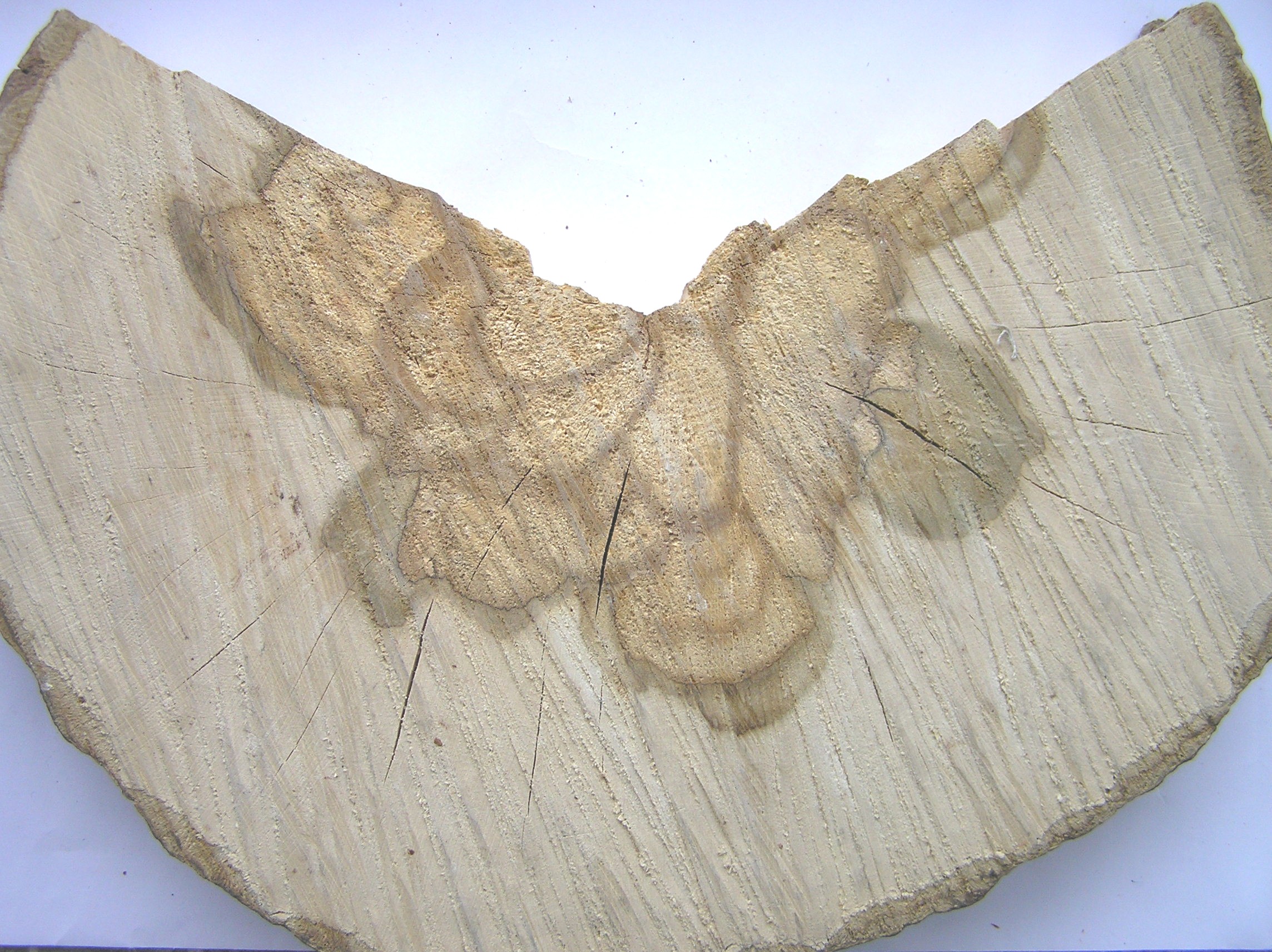Tylosis (botany) on:
[Wikipedia]
[Google]
[Amazon]
In woody plants, a tylosis (plural: tyloses) is a bladder-like distension of a parenchyma cell into the lumen of adjacent vessels. The term tylosis summarises the physiological process and the resulting occlusion in the 
Pictures of tylosis in ''Ulmus'' (Elm), with detailed description of the process
xylem
Xylem is one of the two types of transport tissue in vascular plants, the other being phloem. The basic function of xylem is to transport water from roots to stems and leaves, but it also transports nutrients. The word ''xylem'' is derived from ...
of woody plants as response to injury or as protection from decay in heartwood
Wood is a porous and fibrous structural tissue found in the stems and roots of trees and other woody plants. It is an organic materiala natural composite of cellulose fibers that are strong in tension and embedded in a matrix of lignin t ...
.
It is a key process in wall one of the compartmentalization of decay in trees
Compartmentalization of decay in trees (CODIT) is a concept created by plant pathologist Alex Shigo after studying wood-decay fungus patterns.
Theoretical background
In keeping with the theory of spontaneous generation, in which living things c ...
(CODIT) and other woody plants.

Anatomy
Observed in section under a microscope, tyloses appear as balloon-like protrusions emanating from axial paratracheal parenchyma cells into xylem vessels through pits linking the two. In some types, there may be a distinct barrier between the tyloses emanating from the pits into the vessels, while they may be barely distinguishable in other cases.Role in compartmentalization
Tylosis in the vessels offlowering plant
Flowering plants are plants that bear flowers and fruits, and form the clade Angiospermae (), commonly called angiosperms. The term "angiosperm" is derived from the Greek words ('container, vessel') and ('seed'), and refers to those plants t ...
s counteracts the axial spread of fungal hypha
A hypha (; ) is a long, branching, filamentous structure of a fungus, oomycete, or actinobacterium. In most fungi, hyphae are the main mode of vegetative growth, and are collectively called a mycelium.
Structure
A hypha consists of one or ...
e and other pathogens by slowing down their vertical spread with a physical barrier. A similar process occurs in gymnosperm
The gymnosperms ( lit. revealed seeds) are a group of seed-producing plants that includes conifers, cycads, '' Ginkgo'', and gnetophytes, forming the clade Gymnospermae. The term ''gymnosperm'' comes from the composite word in el, γυμν ...
s, which block access to tracheid
A tracheid is a long and tapered lignified cell in the xylem of vascular plants. It is a type of conductive cell called a tracheary element. Angiosperms use another type of tracheary element, called vessel elements, to transport water through th ...
s by closing the pits that join them to each other.
The blocked vessels also provide a defense against the radial spread of pathogens, limiting their horizontal spread through the plant stem. Protection is stronger at the boundaries where annual rings
Dendrochronology (or tree-ring dating) is the scientific method of dating tree rings (also called growth rings) to the exact year they were formed. As well as dating them, this can give data for dendroclimatology, the study of climate and atmo ...
meet.
The effectiveness of both vertical and horizontal barriers is affected by the speed at which they are established by tyloses, being typically faster in healthier plants.
Role in heartwood formation
As a tree grows, itscambium
A cambium (plural cambia or cambiums), in plants, is a tissue layer that provides partially undifferentiated cells for plant growth. It is found in the area between xylem and phloem. A cambium can also be defined as a cellular plant tissue from w ...
adds an annual increment (or ring) of new wood, and in many species of trees the older wood towards the centre of the tree becomes less important for physiological processes like water and nutrient transportation, and this is converted by the tree to heartwood. This heartwood has no active defenses against infection, but is protected from infection and decay by the blockage of the xylem vessels with tyloses and various substances such as gums, resin
In polymer chemistry and materials science, resin is a solid or highly viscous substance of plant or synthetic origin that is typically convertible into polymers. Resins are usually mixtures of organic compounds. This article focuses on nat ...
s and waxes containing high concentrations of volatile organic compound
Volatile organic compounds (VOCs) are organic compounds that have a high vapour pressure at room temperature. High vapor pressure correlates with a low boiling point, which relates to the number of the sample's molecules in the surrounding air, a ...
s such as terpene
Terpenes () are a class of natural products consisting of compounds with the formula (C5H8)n for n > 1. Comprising more than 30,000 compounds, these unsaturated hydrocarbons are produced predominantly by plants, particularly conifers. Terpenes ...
s that are toxic to insect larvae and tree pathogens such as bacteria and fungi. These products are produced by the cambium and transported to the centre of the stem by cellular structures called medullary rays radiating from the center of the stem and then enter living axial paratracheal parenchyma cells. As the wood ages, the contents of the parenchyma cell burst into the dead vessel through the pit linking the two. The parenchyma cell then dies as its contents are disgorged into the empty space of the dry vessel and highly effective decay-inhibiting substances, notably tannin, are formed and absorbed by the adjacent vessel walls.
External links
Pictures of tylosis in ''Ulmus'' (Elm), with detailed description of the process
Sources
{{Authority control Plant anatomy Wood Trees Forestry